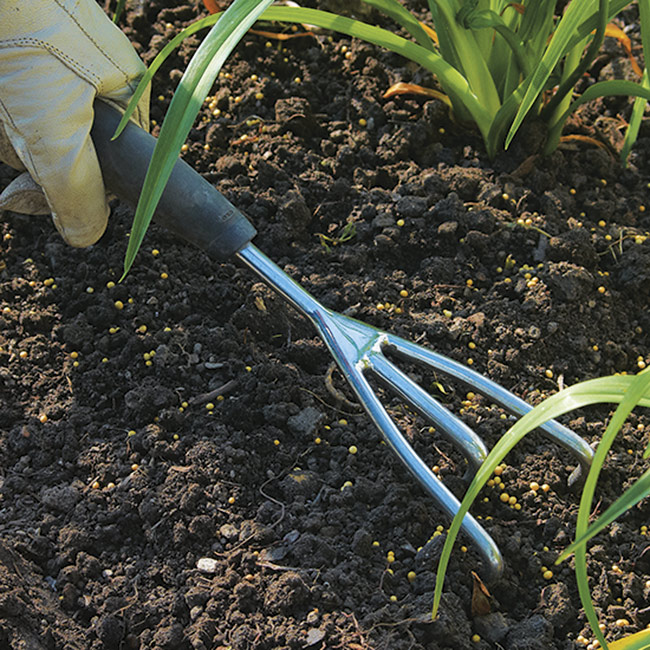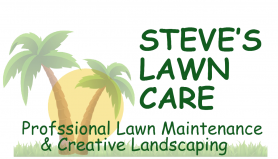Our Fertilizer
Steve's Lawncare
Best Lawn Care Fertilizer Service

Learn a little bit about what makes up quality fertilizer.
Nitrogen (N) is the first number on all fertilizer bags, typically having the highest number of the three numbers on the bag (nitrogen, phosphorous, and potassium)
Nitrogen is the most important nutrient in fertilizer because it is what gives grass its vivacious dark coloring and helps grass grow strong and towards the sun
A lawn deficient in nitrogen can promote diseases such as dollar spot, red thread, and brown patch, the most common cool season grasses in Massachusetts
A nitrogen deficiency with result in a reduced growth rate, a reduction of grass density, a greater development in disease, the emergence of weeds (commonly clover), and appearance of yellowing
Nitrogen deficient turf will first affect older growth so a yellowing of the grass blade will begin towards the bottom of each blade
Phosphorus (P) in the second number on all fertilizer bags
Phosphorus is a component of most fertilizers that is essential for seed germination, turf root development, and early plant development
Phosphorus rich fertilizer is often paired with the application of grass seed or young lawns to help turf grow lush and thick because it of its ability to promote strong root growth
Phosphorous deficiency can often be misidentified as nitrogen deficiency in new growth, appearing yellow and weak. Newly seeded areas that are lacking in phosphorous can appear thin and stunted in appearance.
Potassium (K) if the third number on all fertilizer bags
Potassium is most responsible for the overall general health of the plant enabling it to withstand stress, drought, and disease
Potassium assists in better water and nutrient uptake while helping synthesize proteins and starches
Potassium strengthens the plants root structure
Potassium deficiency leads to a yellowing of older, more established, turf areas (often mistaken for nitrogen deficiency) and reduced growth
Turf deficient in potassium often occurs after high rainfall, over irrigating, or in sandy/thin soils
Our Process
In Massachusetts not all lawns are created equal in regards to soil composition, soil acidity, shade to sunlight ratio, opportunities to receive water, different types of grass, and fertilization history. With that said our general fertilization program consists of five (5) rounds:
Round 1: fertilizer wiith a crabgrass pre-emergent herbicide (early spring)
For this treatment we apply a high nitrogen product to feed our turf. Spring grass is a hungry grass. We believe it is very important to feed cool season grasses with an early dose of nitrogen to jumpstart the process of photosynthesis and promote healthy leaf growth. We pair the high nitrogen with a crabgrass pre-emergent for the reason being weeds, specifically grassy weeds, will grow as soon as they are given the opportunity. This pre-emergent works to control specific weeds BEFORE they take root. By working to attack undesired growth from grassy weeds such as crabgrass, goose grass, barnyard grass, purslane, spurge, and henbit to name a few. As a result of apply an early barrier, our desired turf areas are better equipped absorb all of the water nutrients that they desire.
Round 2: fertilizer with a crabgrass pre-emergent herbicide (late spring)
Our second treatment is a duplicate of our first. If one barrier is good then a second barrier is even better. Due in large part to the climate of our area, we often see very a rainy spring which is good because it breaks down the first treatment, saturating the turf with a much needed dose of nitrogen. However our herbicide is not meant to spend months at a time waiting in the soil. It is supposed to be broken down and absorbed by the turf’s root structure. By applying the same product in round 2 as we do in round 1 we equip our lawns with a greater crabgrass barrier. Also by duplicating a high nitrogen application into the turf we hope to deepen the rich, dark green coloring our lawns.
Round 3: fertilizer with a grub preventative (late spring to mid-summer)
Our third treatment is a fertilizer and preventative insecticide. The aim of this application to feed the lawn with nitrogen and potassium as we need to prepare the lawn for the summer heat, summer stress, and prevalence of summertime turf disease. This timing of insecticide application is crucial to prevent white grub worm larvae, Japanese beetle larvae, mole crickets, European crane flies, cinch bugs, and other surface/subsurface insects from emerging. The emergence of turf grass pests will devour a lawn during the course of the summer, into the fall, and left untreated into following growing season. This product has been the standard in grub preventative control in the lawn fertilization industry for some twenty years. In sum we believe it is better to be prepared for a potential turf grass threat rather than address a problem before damage in done.
Round 4: summer green-up fertilizer (mid-summer)
Our fourth fertilizer application is a nitrogen/potassium based fertilizer with an injection of iron. This application is designed to assist lawns to recover from summer stress. It will provide a slow release improvement to the coloring of the turf and help strengthen grass root walls. By doing this we help turf prevent summer/late summer disease from developing. The addition of iron in this fertilizer helps the plant produce chlorophyll, which gives the plant oxygen as well as its healthy green coloring.
Round 5: winterizer (late summer – mid/late fall)
The fifth and final fertilizer treatment in our program is a lime based fertilizer. The cool season grasses in the Massachusetts area require the majority of their annual nutrients taken in during this time. In the fall, cool season grasses must receive large amounts of nutrients to help overcome summer stress and feed them through the longer winter months. The addition of lime in this application assists the turf in nutrient uptake, while also resetting the soil’s pH level, which is often fluctuates due to rainfall, irrigation, addition of other foreign substances, and even the breakdown of excess nitrogen/phosphorous/potassium
Other Treatments
Lime 🡪 A product with a proven track record called AMP. Amp can be applied anytime during the season, although we recommend applications during the late spring or during the fall to maximize its benefits. The many benefits of AMP include balancing pH levels, amplifying the uptake of nutrients within the soil, increasing moisture storage, stimulating root growth, assisting turf in temperature/drought hardiness, and improving seed germination. AMP also quickly enriches the deep green color of grass.
Granular Flea/tick treatment 🡪 This product is used on all turf areas and ornamental beddings to control a wide spectrum of insects such as fleas, ticks, chinch bugs, ants, and sod webworms among others. This application is applied as requested or ever 45-90 days depending on weather.
Natural Mosquito treatments 🡪 This product is the staple for mosquito extermination and prevention. It is a residual spray that is applied to all outside surfaces (exterior siding, foundations, porches, windows, garages, grassy areas, ornamental trees, ornamental shrubs, flowers, ground cover, wooded areas, and anywhere else mosquitos/gnats/fruit flies congregate. This treatment is applied every 3-5 weeks weather depending or upon request.
Core Aeration 🡪 Lawn aeration is widely considered one of, if not, the best thing to do to your lawn. Core aeration helps to relieve soil compaction (soil compaction can fervent air, water, and fertilizer from reaching the root system) and improves the effectiveness of any fertilizer program. It supports healthy lawn thatch management, by introducing thousands of plugs of soil from your lawn to the thatch level, speeding up the natural process of decomposition. Core aerating, specifically in the fall, helps improve turf resiliency, enhancing heat stress tolerance, reducing water runoff, and builds a thicker lawn. The last point proves even more true with the addition of premium cool season grass seed and starter fertilizer. Core aerating in the fall is often used to repair turf areas that have suffered from lack of water, lack of fertilizer, or complete lawn renovations. While most commonly done in the fall we also offer spring aerations for heavily shaded areas or lawns that were often neglected in previous years.
Lawn Dethatching 🡪 Dethatching is most common in the spring and can be crucial to keeping grass and soil healthy. The process of dethatching is one where we remove excess amounts of thatch (a layer of organic matter that accumulates on a lawn around the base of the grass.) Dethatching allows your lawn to breathe in a sense, better allowing sunlight, water, and fertilizer to be absorbed directly into the soil. It should be noted that not all thatch should be removed as it acts as a protective layer to your lawn, helping retain much needed moisture for the upcoming warmer months.
